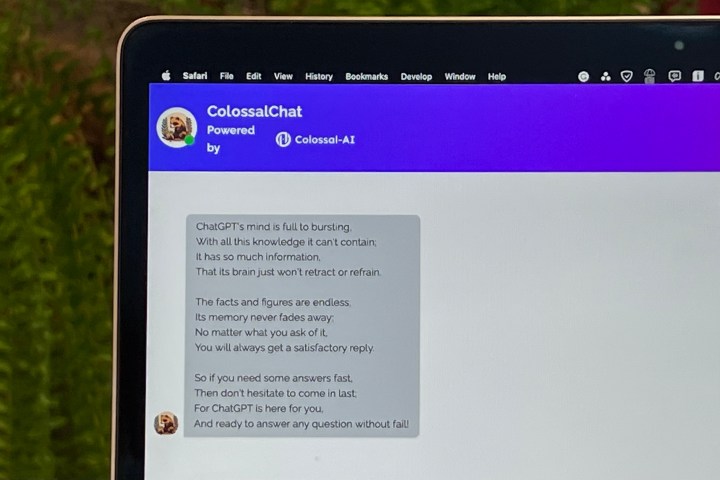Antenna
television is back. In recent years, millions of cord-cutters have
rediscovered antennas as a reliable way to watch broadcast networks like
ABC, NBC, and FOX, all for free — and now, broadcasters are eager to
get the rest of us hooked. They’ve been marching ahead with the
deployment of ATSC 3.0, a next-generation broadcast format that supports
4K, HDR, Dolby Atmos audio, and even interactive apps over the air, no
cable or streaming subscription required.
A little over a year
ago, one of the country’s biggest broadcasters made an unexpected
acquisition to help bolster the transition: The E.W. Scripps Company,
which operates dozens of ABC, NBC and Fox stations as well as a handful
of nationwide broadcast networks, quietly bought Nuvyyo, a Canadian
startup best known for its Tablo DVR devices for cord-cutters. The
acquisition, which hasn’t been previously reported, is part of Scripps’
multibillion-dollar bet on acquiring stations, networks, and spectrum
for an ATSC 3.0-powered antenna TV future.
But the transition to
ATSC 3.0 has been anything but smooth. Five years after its launch, the
format is still not available in many major markets. Support from TV
makers has been limited, and some of the promised features likely won’t
be available for years to come. Meanwhile, free streaming TV channels
are growing by leaps and bounds and are quickly becoming a viable
alternative to both cable and antenna TV. As it stands, the future of
broadcast TV is looking remarkably fuzzy.
A big promise, a small start
ATSC
3.0 is to broadcast television what 5G was to mobile a few years ago: a
mixture of buzzwords and real innovation, something that’s definitely
coming, but no one really quite knows yet what its true impact will be.
And on paper, there’s a lot to like about it: the standard allows
broadcasters to transmit TV signals with up to 4K HDR and better audio.
ATSC 3.0 also includes data transmission features for better program
guides, interactive apps and, eventually, advertising services.
Most people aren’t currently able to watch over-the-air broadcasts in ATSC 3.0
The
first tests of ATSC 3.0 began a decade ago. The FCC gave the full
go-ahead for the new standard in 2017, and local broadcasters have
gradually been adding ATSC 3.0 feeds ever since. In early 2023,
broadcasters were utilizing ATSC 3.0 in around 50 local markets,
including Los Angeles, Portland, and Washington, DC. By the end of the
year, 75 percent of US households will have access to ATSC 3.0,
according to Pearl TV, a broadcaster group that’s promoting the standard
under the Nextgen TV moniker.
Consumer adoption is another story.
Most people aren’t currently able to watch over-the-air broadcasts in
ATSC 3.0, even if they live in a market where it has been rolled out.
While any existing antenna can receive ATSC 3.0 signals, the same isn’t
true for TVs. ATSC 3.0 is not backward-compatible with ATSC 1.0, the
current broadcast standard, and most existing TVs can only receive ATSC
1.0 signals. Manufacturers like Samsung and LG began equipping some of
their higher-end TV sets with ATSC 3.0 tuners in recent years, and Sony
is even building a tuner for the new format into every new TV sold in
the United States.
However, adding ATSC 3.0 compatibility raises
the component costs of a TV, which is why many makers of budget-priced
TV sets have so far been shunning the new format. “The current VIZIO TVs
on the market do not include ATSC 3.0 tuners,” a Vizio spokesperson
told us after CES in January. TCL, known for its low-price Roku TVs,
also remains on the sidelines. “We will not incorporate ATSC 3.0 in
(the) first half of 2023, as consumer demand for the functionality is
still low,” a spokesperson told us. “We will continue to watch the
market and adjust when needed.”
How new hardware can help
With
most TVs not supporting ATSC 3.0 out of the box, external hardware
could be key to the adoption of the format. That’s where Nuvyyo, a small
Canadian startup best known for its Tablo DVRs, comes in. Regulatory
filings show that Scripps acquired Nuvyyo for less than $14 million in cash in January of 2022; the startup had raised $10 million
over two rounds since it was founded a decade earlier. The modest price
tag speaks to how difficult it is to innovate in the over-the-air
television space.
Nuvyyo’s Tablo DVRs have become a favorite among
cord cutting enthusiasts, but Tablo’s value proposition has been harder
to explain to the average consumer. Most of Tablo’s devices don’t
directly connect to a TV but instead capture over-the-air TV signals and
then serve the resulting recordings over Wi-Fi. This whole-home DVR
setup makes it possible to stream recorded TV shows to a wide range of
devices, including phones and tablets, on the go, but it also is a lot
more complicated than just hooking up a Roku to your TV.
The fact
that Tablo charges a monthly service fee for access to its program
guide hasn’t exactly helped with adoption. Over 10 years, Nuvyyo has
shipped just over 200,000 Tablos, and the company currently has around
80,000 active customers, according to the LinkedIn bio of its VP of finance.
“Not everyone wants to change their TV for new technology.”
Still,
Scripps has big plans for Tablo DVRs. “It’s a very important project to
us,” said Scripps Networks chief distribution officer Jeffrey Wolf in a
conversation with The Verge. Wolf didn’t share any details on
how exactly Scripps plans to use Tablo going forward but said that it
was “a critical piece” of the company’s push towards broader
over-the-air adoption — a push that also includes a marketing campaign
dubbed The Free TV Project.
Wolf
argued that an over-the-air DVR could make cord cutting more convenient
and help over-the-air networks compete with streaming services. “It
allows viewers to watch over-the-air content essentially on demand,” as
Wolf put it.
Perhaps just as important is that Nuvyyo has been
working on tech to make its DVRs and existing TV sets futureproof. The
startup experimented with a cloud DVR in the past and in early 2022
announced its first device supporting the new ATSC 3.0 broadcast
standard. Wolf didn’t want to spill the beans on how exactly his company
intends to use Tablo, but he hinted at plans to use the company’s
future devices to aid the transition to ATSC 3.0. “Not everyone wants to
change their TV for new technology,” he said. “Converters or dongles
are going to be important pieces of the success of that transition.”
4K support is still MIA
There
are other reasons consumer adoption is lagging. Even viewers who happen
to have a compatible TV and live in a market where ATSC 3.0 is
available quickly find that the broadcasts aren’t all they’re cracked up
to be. ATSC 3.0 may, in theory, support 4K HDR, but at this point, 4K
broadcasts are virtually nonexistent in the United States.
One
reason for this is that the FCC decided against a hard transition to
ATSC 3.0 that would have left everyone without a compatible device in
the dark. “We have to both offer our current services (ATSC 1.0) while
also offering the 3.0 signal,” explained Alex Siciliano, a spokesperson
for the National Association of Broadcasters (NAB). The FCC currently
mandates that stations transitioning to ATSC 3.0 keep their legacy
signals up and running for at least five years, but it could extend that
timeline.
The transition to ATSC 3.0 is “stalled” and “in peril,” broadcasters say
To
achieve dual support with a limited amount of spectrum, broadcasters
partner with each other in local markets. A local ABC affiliate may, for
instance, switch to ATSC 3.0 and also carry the local NBC and FOX
stations in the new format. In exchange, those stations will continue to
broadcast the ABC station’s signal in the legacy ATSC 1.0 format — an
approach known in the industry as “lighthousing” that simply doesn’t
leave enough bandwidth for 4K signals. “We are spectrum-constrained,”
admitted Pearl TV’s managing director, Anne Schelle.
The transition to ATSC 3.0 is “stalled” and “in peril” due to regulatory inaction, the NAB wrote in a letter
to the FCC earlier this year. Highlighting the 4K issue, broadcasters
called for “a plan to eventually end the wasteful dual transmission in
both ATSC 1.0 and ATSC 3.0” and suggested that an FCC task force should
come up with a firmer transition timeline.
“It is time for the FCC
to take a more active role,” said Siciliano, adding that it wasn’t in
the commission’s interest to “leave behind viewers — especially those
that rely solely on over-the-air TV for their news and information.”
Free streaming channels are booming
Antenna usage remains popular, especially among lower-income and immigrant households. Eighteen percent of TV viewers told market researchers
last year that they owned an antenna. Among Latinx audiences, one in
four viewers said they owned an antenna. The Consumer Technology
Association estimates that there will be around 8.5 million antenna
sales this year alone.
Those numbers have prompted Scripps to bet
big on over-the-air television. With cable TV audiences declining,
over-the-air seemed like the best bet to reach millions of eyeballs that
the company can then monetize with advertising. In addition to buying
up dozens of local broadcast stations, the company spent around $300 million on broadcast-only BET competitor Bounce in 2017, followed by the $2.65 billion acquisition of the over-the-air networks Ion as well as associated spectrum in 2020.
But
while Scripps was busy pouring billions into broadcast networks and
infrastructure, another way to watch linear television emerged: free,
ad-supported streaming channels. Turn on any smart TV these days, and
you’ll find program guides with hundreds of TV channels featuring
familiar names like AMC, NBC and FOX, with no need to pay for cable or
hook up an antenna.
The Tablo Dual Lite over-the-air DVR. Image: Nuvyyo
These free linear channels have been a big hit with audiences and advertisers: Samsung alone claims to stream more than 3 billion hours of free linear programming to its smart TVs per year, and advertisers are expected to spend more than $4 billion
on domestic linear streaming services this year — ad revenue that
directly benefits TV makers, unlike those costly ATSC 3.0 tuners.
Today,
many media companies still use these so-called FAST channels as a way
to make some extra money with older shows. AMC, for instance, doesn’t
stream its cable channel to smart TV viewers, in part because it has
exclusive deals with cable TV services. Instead, it has dedicated FAST
channels for back-to-back The Walking Dead and Portlandia reruns.
However,
some broadcasters have begun to retransmit their linear feeds as FAST
channels. Scripps, for instance, has been streaming its Ion and Bounce
broadcast networks in their entirety, and the explosive growth of FAST
is not lost on the company. “When we track audience levels for over the
air, we’re generally looking at how we’re doing year over year because
it’s kind of a slower-moving train at this point,” said Scripps Networks
chief research officer Jon Marks. “When we look at FAST, we’re looking
at it quarter by quarter because that’s how fast it’s growing.”
In
light of these changes, Scripps is hedging its bets. The company plans
to keep promoting over-the-air viewing and also talk more publicly about
its plans for Tablo in the coming months. Scripps also remains
committed to ATSC 3.0, which will be a quality improvement even without
4K. “Our networks right now are mostly SD,” Wolf said. “The ability to
put our product out there in HD will change the value of our
proposition.”
But it’s also looking to invest more into free
streaming. For the first time, the company aims to launch a new TV
network on FAST services this spring and then bring it to antenna
audiences if it does well with streamers. Marks still doesn’t expect
linear streaming to overtake over the air from an audience size
perspective any time soon. Then again, with the transition to ATSC 3.0
moving as slow as it is, it’s possible that free streaming will
eventually leapfrog over-the-air broadcasting and turn into the de facto
future of free TV while antennas slowly become irrelevant.
“Right
now, the best use of our spectrum is building over-the-air broadcast
networks,” said Wolf. “Is that the path of the future? Time will tell.”



 Figure 2. Workflow Overview
Figure 2. Workflow Overview Figure 3. Response Comparison Assessed by GPT-4
Figure 3. Response Comparison Assessed by GPT-4 Northrop
Grumman has been chosen by the U.S. Army to participate in Increment 2
of the Future Tactical Unmanned Aircraft System (FTUAS) program. With
teammate Shield AI, Northrop Grumman is developing an
enhanced-capability version of the innovative V-BAT aircraft, shown in
this rendering, to replace the Army’s long-serving RQ-7B Shadow tactical
UAS (Picture source: Northrop Grumman and Shield AI)
Northrop
Grumman has been chosen by the U.S. Army to participate in Increment 2
of the Future Tactical Unmanned Aircraft System (FTUAS) program. With
teammate Shield AI, Northrop Grumman is developing an
enhanced-capability version of the innovative V-BAT aircraft, shown in
this rendering, to replace the Army’s long-serving RQ-7B Shadow tactical
UAS (Picture source: Northrop Grumman and Shield AI):format(webp)/cdn.vox-cdn.com/uploads/chorus_asset/file/24487172/tablo.png)


.jpg)
_launching_ceremony_at_the_Mitsubishi_Dockyard_Kobe_October_12,_2022_13.jpg)

